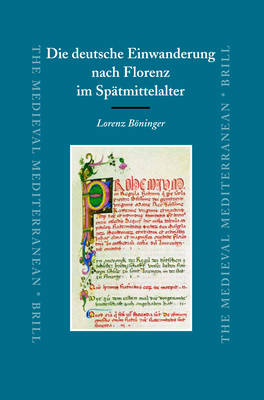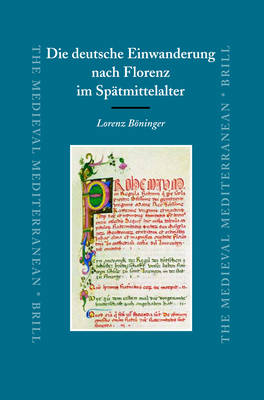
- Afhalen na 1 uur in een winkel met voorraad
- Gratis thuislevering in België vanaf € 30
- Ruim aanbod met 7 miljoen producten
- Afhalen na 1 uur in een winkel met voorraad
- Gratis thuislevering in België vanaf € 30
- Ruim aanbod met 7 miljoen producten
Zoeken
Omschrijving
This volume deals with the history of migration from Central Europe to the Italian city of Florence in the late Middle Ages (ca. 1350-1500). Using a broad variety of sources (confraternity records, fiscal and notarial documents), it shows that this history was far more important than hitherto known. Not only Dutch and Northern German weavers, but also shoemakers from Southern Germany, and many other Northern artisans and artists worked in Florence in a continuous cultural exchange. The identification of a certain "Arigo" from Nuremberg, the translator of Boccaccio's Decamerone into German, shows, however, how the changing climate after 1480 conditioned also the professional choices: in fact, after these years he became known as a prolific draughtsman of geographical maps under the name of "Henricus Martellus".
Specificaties
Betrokkenen
- Auteur(s):
- Uitgeverij:
Inhoud
- Aantal bladzijden:
- 424
- Taal:
- Engels
- Reeks:
- Reeksnummer:
- nr. 60
Eigenschappen
- Productcode (EAN):
- 9789004150478
- Verschijningsdatum:
- 28/04/2006
- Uitvoering:
- Hardcover
- Formaat:
- Genaaid
- Afmetingen:
- 246 mm x 182 mm
- Gewicht:
- 889 g

Alleen bij Standaard Boekhandel
+ 647 punten op je klantenkaart van Standaard Boekhandel
Beoordelingen
We publiceren alleen reviews die voldoen aan de voorwaarden voor reviews. Bekijk onze voorwaarden voor reviews.








